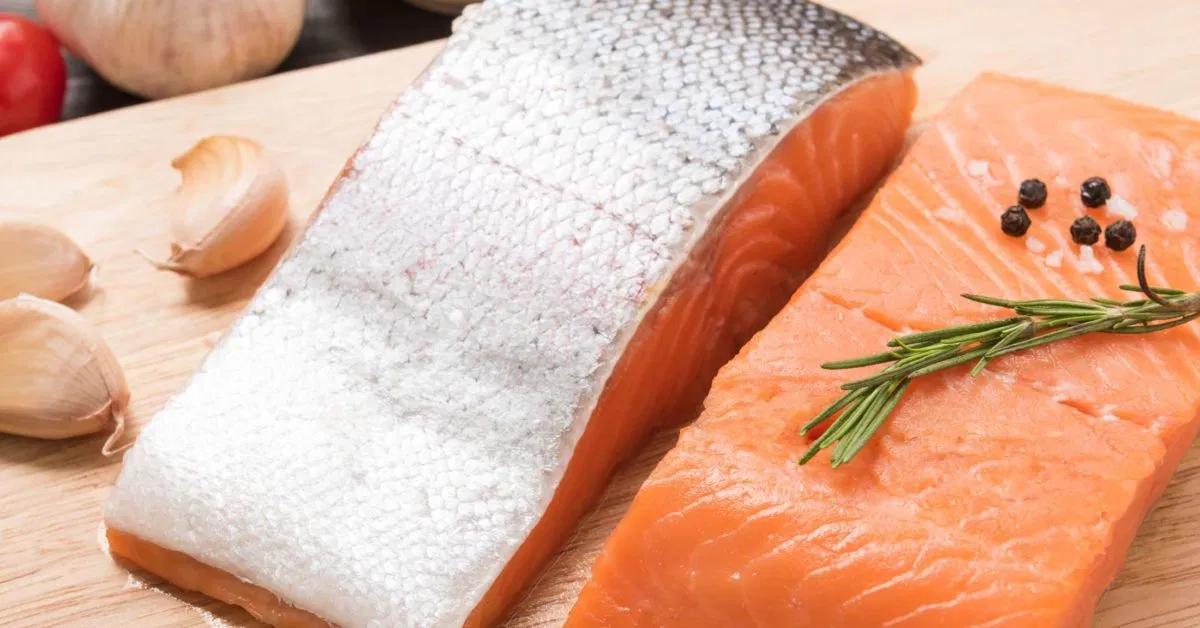Smoked salmon is a popular delicacy enjoyed by many people around the world. It is known for its rich, smoky flavor and delicate texture. But what about the skin? Can you eat smoked salmon skin? Let's explore the nutritional benefits, cooking methods, and potential risks associated with consuming smoked salmon skin.
Is the Skin on Smoked Salmon Good to Eat?
The skin on smoked salmon is generally safe to eat as long as it has been cleaned thoroughly and the outer scales have been removed. Fish skin is rich in nutrients such as protein, omega-3 fatty acids, and vitamin E, which can help with muscle growth, heart health, and skin health.

However, it is important to note that some fish may contain significant amounts of mercury and other toxins and pollutants. Therefore, it is best to select fish that have relatively low levels of mercury to minimize the risk of consuming harmful substances.
When it comes to smoked salmon, the skin has been exposed to the smoking process, which may enhance its flavor and texture. Some people enjoy the unique taste and crispy texture of smoked salmon skin, while others prefer to remove it before consuming the fish.
What Can I Do with Smoked Salmon Skin?
If you decide to keep the skin on your smoked salmon, there are various ways you can incorporate it into your meals. One simple method is to grill, sear, or fry the salmon skin to make it crispy and full of flavor. This crunchy texture can add a different dimension to your dish.
Another popular option is to make salmon bacon or salmon rinds by cutting the skin into thin strips and frying them in oil. This creates a delicious and nutritious snack that can be enjoyed on its own or used as a topping for salads, soups, or sandwiches.
Is it Safe to Eat the Skin on Salmon?
Salmon skin is usually considered safe to eat, as it contains many of the same minerals and nutrients found in the fish itself. It is a good source of protein, essential omega-3 fatty acids, vitamins B and D, and minerals like selenium.
The U.S. Food and Drug Administration (FDA) recommends consuming 2 to 3 servings of oily fish, such as salmon, each week to reap the health benefits. Leaving the skin on the salmon may provide some additional nutrients for the body.
However, it is important to consider the source and quality of the fish. Fresh wild-caught salmon from clean water areas is generally preferred to minimize the risk of exposure to toxins and pollutants. Farmed salmon may carry a higher risk of contamination.
Nutritional Benefits of Salmon Skin
Salmon skin contains a high concentration of omega-3 fatty acids, which have various health benefits. These fatty acids may help protect the heart against specific risk factors for heart disease, such as high blood pressure. They can also contribute to brain health, skin health, and eye health.
Research suggests that salmon skin may have antioxidant properties and could potentially help treat type 2 diabetes and prevent certain types of cancer. It also adds more protein to the diet, making it a good alternative to red meat for those looking to diversify their protein sources.
How to Cook Salmon Skin
When it comes to cooking salmon skin, it is important to use methods that preserve its texture and flavor. Boiling, smoking, or steaming the salmon can result in soggy and rubbery skin, which may not be as enjoyable to eat.
Grilling, searing, or frying the salmon skin can help achieve a crispy and flavorful result. These methods allow the fats in the skin to render and create a crunchy texture that complements the fish. Leaving the skin on while grilling can also protect the delicate flesh from burning.
One simple recipe is to make salmon bacon by cutting the skin into strips, drying them with a paper towel, and frying them in oil until crispy. Season with salt or other desired seasonings to taste. This versatile snack can be used in various dishes or enjoyed on its own.
Risks and Side Effects
While smoked salmon skin can be a nutritious addition to your diet, there are some risks and side effects to consider. It is important to know the source of the salmon and ensure it comes from clean water areas to minimize the risk of contamination.
Salmon may absorb toxins and pollutants from their food and the water they swim in, including persistent organic pollutants (POPs), polychlorinated biphenyls (PCBs), and methylmercury. These substances can pose health risks, particularly if consumed in large quantities or over a long period of time.
Additionally, consuming large amounts of omega-3 fatty acids, such as those found in salmon skin, may interact with certain medications, such as blood thinners or anticoagulant medications. It is always advisable to consult with a healthcare professional before making any significant changes to your diet.
Finally, it is worth noting that salmon skin adds more calories to the diet compared to skinless salmon. If you are watching your fat or calorie intake, it is important to factor this in when incorporating smoked salmon skin into your meals.
In conclusion, smoked salmon skin can be safely consumed as long as it has been cleaned thoroughly and the outer scales have been removed. It is rich in nutrients like protein, omega-3 fatty acids, and vitamin E, which offer numerous health benefits.
Whether you choose to eat the skin or not is a matter of personal preference. If you decide to keep the skin on, there are various cooking methods you can use to enhance its flavor and texture. Just be mindful of the source and quality of the fish to minimize the risk of consuming contaminants.
As always, it is important to listen to your body and consult with a healthcare professional if you have any concerns or specific dietary restrictions. Enjoying smoked salmon, with or without the skin, can be a delicious and nutritious addition to your meals.
If you want to know other articles similar to Can you eat smoked salmon skin? nutritional benefits and risks you can visit the Food category.


Related Articles